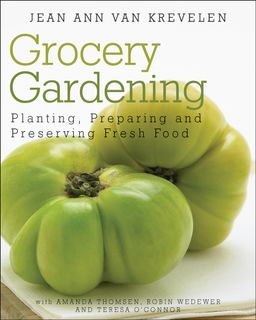Spices often used for wassail, including allspice, nutmeg, cloves and cinnamon.
If there's a drink that deserves a toast this holiday season - and all winter, really - it's wassail. This steaming spiced concoction is often made with roasted apples; sugary spices; dark ale, wine, sherry or port; along with other warming ingredients.
"Wassail: a liquor made of apples, sugar, and ale;
a drunken bout; a merry song."
Samuel Johnson's Dictionary, 1756
The word wassail comes from the Anglo-Saxon toast waes hael (or something similiar), which means to "be well." And this drink has long been closely connected with good health.
Since the Middle Ages, wassail was served during the winter season, particularly at New Year's Eve and Twelfth Night (Jan. 6), so that folks could wish fine health to each other for the new year.
"Love and joy come to you,
And to you your wassail too,
And God bless you and
send you a happy New Year."
The Wassail Song
Make a Toast: Wassail is now a big part of our culture, without us even knowing it. For example, the expression "to make a toast" comes from the toasted bread often served on top of the wassail bowl.
"It was likewise the custom... for the master of the house
to fill a large bowl ... and drink of it first himself,
and then give it to him that sat next, and so it went around."
Gentleman's Magazine, 1784
Bless the Trees: Among the strangest customs was the apple wassail, which dates back to the 16th century. Around Twelfth Night (Jan. 6), English farmers brought wooden wassail bowls to their apple orchards for an annual celebration.
The farmers blessed the fruit trees by drinking to their health. They also put pieces of toast around their roots or hung the toast from the branches. Why? To ensure a good harvest in the coming year. The arcane ritual still takes place in parts of England today.
"Old apple tree, we wassail thee, and hoping thou wilt bear
For the Lord doth know, where we shall be, till apples come another year
To bear well and bloom well, so merry let us be
Let every man take off his hat and shout to the old apple tree."
Apple Tree Wassail, North Somerset, England
Recipe: There are many different recipes for wassail. Here's one for you to try. To make a wassail bowl, you'll need:
A big bowl, preferably wooden
3-4 pints of dark ale or beer (other recipes use wine, sherry and/or port)
1/4 cup of holiday spices such as allspice, cloves, cinnamon, ginger, nutmeg, cardamom (whole; not ground)
1/4 cup of sugar (to taste)
4 apples, preferably roasted
1 1/2 cup of orange juice
The juice of one lemon
Toasted bread for the top
Lots of good cheer and positive intentions
How to make a wassail bowl:
1. Slowly heat ale or beer. Add spices, sugar, apples, orange and lemon juice.
2. Before the drink boils, remove from heat and serve with toasted bread on top.
3. Serve immediately while still hot.
4. Have fun.
Health Benefits: There's a good reason why wassail was connected with good health, and the spices play a big role.
As I wrote in
Grocery Gardening: Planting, Preparing and Preserving Fresh Foods, (co-authored with Jean Ann Van Krevelen, Amanda Thomsen and Robin Ripley) there are plenty of health benefits to eating herbs and spices of all types.
The spices in wassail are no exception. These spices are packed with healthy properties. Allspice and cloves have antiseptic qualities that come in handy during the winter. Cinnamon has been shown to improve the body's circulation, as well as other benefits. And ginger and cardamom both strengthen the digestive system, to name just a few qualities of these spices.
So, make a toast and drink your wassail for good health in the new year!
Learn more about the health benefits of spices.
Explore more about wassail traditions:
The Oxford Book of Days
The Stations of the Sun
Order copy of
Grocery Gardening








.jpg)










